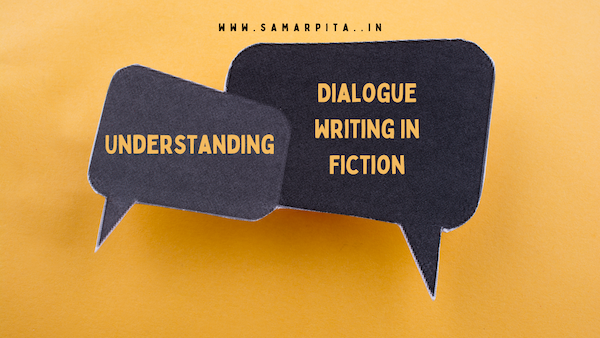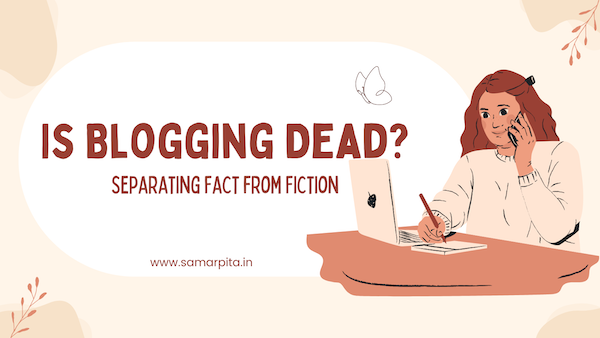It depends on the type of publishing you are referring to. If you are looking to publish a research paper in a scientific journal, many reputable journals have a pay to publish model, where authors pay a fee to cover the costs of publishing and distribution. This is known as open access publishing. On the other hand, if you are looking to publish a book, it is generally not necessary to pay for publication, as traditional publishers usually bear the cost and pay the author royalties on sales. However, there are also self-publishing options available where you can pay to have your book printed and distributed. It’s important to carefully research and compare your options before making a decision.
Also Read: Understanding Dialogue Writing In Fiction
What are the different types of publishing?
- Traditional – A traditional publisher finances the publication of a book, pays the author royalties, and provides editing, design, and marketing services.
- Self-publishing – An author finances the publication of their own book, retains control over the creative process and distribution, and receives a larger share of the profits.
- Hybrid – A hybrid of traditional and self-publishing, where the author pays for some of the services, such as editing and design, but also receives support from a publishing company for distribution and marketing.
- E-publishing – The publication of books, magazines, or newspapers in electronic format, often for distribution on the internet.
- Academic – The publishing of scholarly works, such as research papers, conference proceedings, and books in a particular field of study.
- Open-access – A publishing model where authors pay a fee to make their work immediately available for free to anyone with internet access.
Each type has its own advantages and disadvantages, and the best choice for an author depends on their specific needs and goals.
Also Read: Tips for Authentic and Engaging Writing
Here are some of the key advantages and disadvantages of the different types of publishing:
Traditional publishing:
Advantages:
- The publisher takes care of editing, design, and marketing, allowing the author to focus on writing.
- The publisher provides credibility and recognition to the author.
- It often provides higher royalties to the author.
Disadvantages:
- The author must go through a competitive and selective process to get their work accepted by a traditional publisher.
- The author gives up control over the creative process and may have limited input into editing and design.
- It can take a long time to get published through traditional channels.
Also Read: Crafting Well-Rounded and Relatable Characters with Depth
Self-publishing:
Advantages:
- The author has complete control over the creative process and distribution of their work.
- The author can publish their work quickly and easily.
- It allows the author to keep a larger share of the profits.
Disadvantages:
- The author must finance the publication and marketing of their own work.
- Self-published books are often perceived as less credible or of lower quality than traditionally published books.
- The author must have the skills and knowledge to edit, design, and market their work effectively.
Hybrid publishing:
Advantages:
- The author has more control over the creative process than in traditional publishing, but still receives support for distribution and marketing.
- It provides a more personalized experience and often faster publishing times than traditional publishing.
- It can provide greater credibility to the author than self-publishing.
Disadvantages:
- The author may have to pay for some of the services, such as editing and design, which can be expensive.
- The author may still be giving up some control over the creative process.
- It may be perceived as less credible than traditional publishing.
Also Read: A Ready-Reckoner To Write Authentic and Relatable Personalities
E-publishing:
Advantages:
- It allows for immediate distribution and accessibility to a global audience.
- E-books are often less expensive than print books.
- It can be more environmentally friendly than print publishing.
Disadvantages:
- E-books can be more difficult to read for some people, particularly older readers.
- E-books may not be available in all countries due to licensing restrictions.
- E-books may be more vulnerable to piracy than print books.
Academic publishing:
Advantages:
- It provides recognition and credibility in the academic community.
- It allows for the dissemination of new research and ideas.
Disadvantages:
- The process can be slow and competitive.
- There may be high costs associated with publishing in certain academic journals.
- Access to academic publications may be limited, particularly for those without access to academic libraries.
Also Read: Crafting Captivating Openings: A Guide to Grabbing Readers’ Attention
Is it worth paying to get my book published?
Whether it’s worth paying to get your book published depends on your individual goals and circumstances. Here are a few factors to consider:
- Market fit: If your book is well-written and has a clear target audience, self-publishing or hybrid publishing may be a good option, as it allows you to reach readers directly.
- Control: If you value control over the creative process and distribution of your work, self-publishing or hybrid publishing may be the best choice for you.
- Credibility: If you are looking to establish credibility as an author, traditional publishing may be the best option, as it provides a level of validation from a reputable publisher.
- Cost: If you have the resources to finance the publication and marketing of your book, self-publishing or hybrid publishing can be a good option. However, if you do not have the financial resources, traditional publishing may be a better option, as the publisher bears the cost of publication.
- Speed: If you are looking to get your book published quickly, self-publishing or hybrid publishing may be the best option, as the process is often faster than traditional publishing.
Ultimately, the best choice for you will depend on your goals, resources, and personal preferences. It’s important to carefully research and consider all your options before making a decision.
Also Read: Navigating the Editing Journey: A Collaborative Symphony
First published here.
***
If you are looking for an excellent manuscript editor, someone to create content for your business, or an expert to help build your personal or professional brand on social media, then look no further and connect with me at editor@samarpita.in I can be followed on instagram at @samarpita and on twitter at @samarpitadotin.
***********
Read my ebook WRITE. EDIT. PROMOTE. to learn the basics about becoming an author – from writing your own book, to editing your first draft, and to promoting your book yourself! You can also read my ebook How To Write A Story Effectively and learn some valuable lessons about how a story can go from average to extraordinary. This book is part 1 of the series.
In fiction, I have two short stories for children in an ebook called Bedtime Stories.





